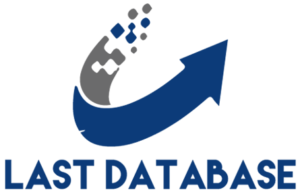If you’ve ever wondered how to do data analysis efficiently, you’re not alone.
In an increasingly information-driven world, data is the new currency of value for businesses, governments, and even personal lives.
But what does it really mean to analyze data? And more importantly, how do you turn random numbers into strategic decisions?
Imagine you’re a manager trying to understand why sales dropped last quarter. Or a marketer trying to predict which campaigns will perform best. Or a data scientist working through millions of records to identify behavioral patterns.
In all of these cases, data analysis is key to extracting answers and making decisions based on facts – not guesswork.
In this guide, you will learn how to perform data analysis step by step , from data collection to data interpretation. Even if you have no technical experience, this article will help you understand the process in a clear and accessible way, providing practical insights to apply in your daily life.
Shall we begin? Complete guide
What is data analysis?
Analyzing data goes far 8 corporate blog mistakes and what you can learn from them beyond simply looking at numbers on a spreadsheet. It’s a process that transforms raw information into useful knowledge to understand scenarios, solve problems, and make smarter decisions.
Think of a restaurant that notices a drop in business on certain days of the week. Just having sales numbers doesn’t tell you much.
But, by crossing this data with information such as weather, peak times and customer preferences, the manager can discover that on rainy days deliveries increase, while in-person visits decrease.
With this insight, he can invest more in delivery on rainy days and create promotions to attract customers to the salon on slower days.
In the next topics, we will explore each of these steps in detail.
How to do data analysis step by step
Performing efficient data analysis what is big data? definition, examples and how to apply it doesn’t just mean throwing numbers into software and expecting it to return ready-made answers.
It is a process that requires a critical and structured look, combining organization, interpretation and a good dose of questioning.
Many people believe that analysis begins when the data is already available, but in fact, the first step takes place before it is even collected. For the process to yield truly useful insights, it is essential to be clear about what you want to discover.
Below, we’ll explore each step of this journey, highlighting not just the technical procedures but also the mindset required to extract real value from data.
1. Defining the objective: why are we analyzing this data?
Before anything else, you need to belgium numbers have a clear purpose. Without this, you run the risk of gathering a large amount of information without knowing exactly what to do with it.
All data analysis starts with a question, which can be something as simple as “Why did sales drop last quarter?” or more strategic, such as “What behavior patterns indicate that a customer is about to cancel our service?”
This step requires a close look at the problem and a careful formulation of the central question. The more specific the question, the more efficient the analysis will be.
2. Data collection: where and how to find the right information Complete guide
With the question defined, the next step is to identify what data is needed to answer it.
The most obvious data is not always the most relevant. Often, the answer lies in less explored sources. In the case of an e-commerce company trying to understand the drop in sales, revenue figures are a starting point, but could factors such as average browsing time on the site, number of abandoned carts and customer reviews provide richer answers?






